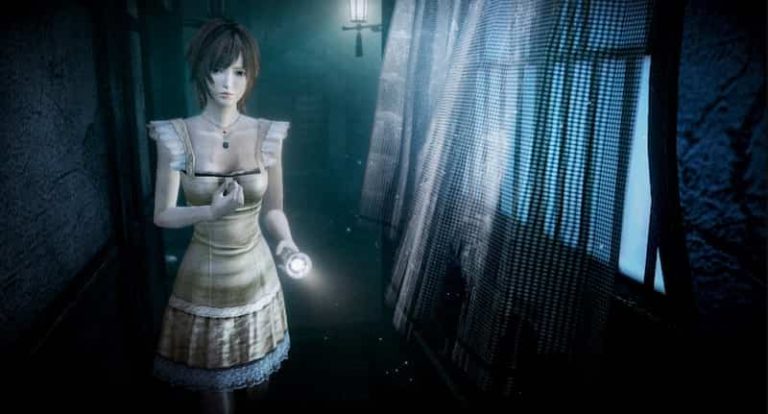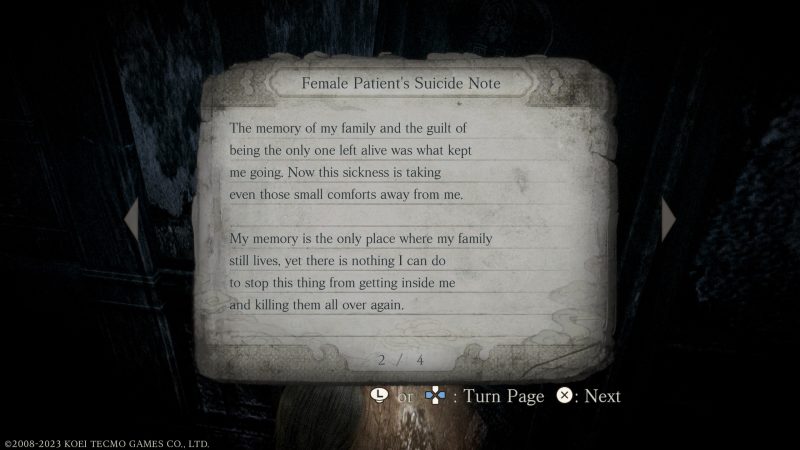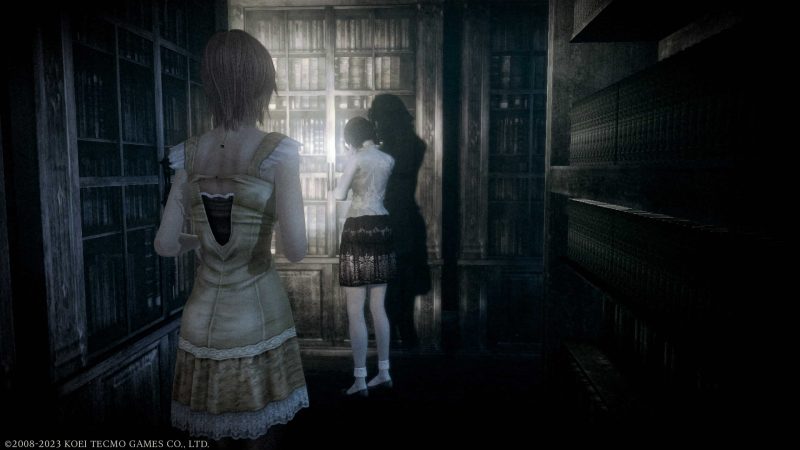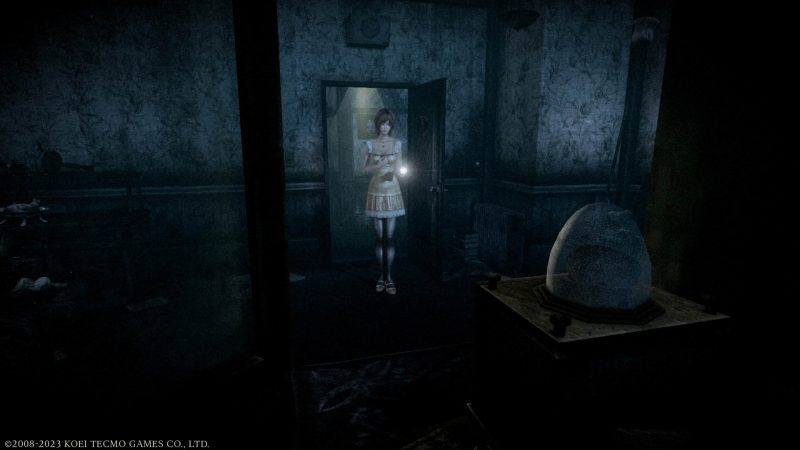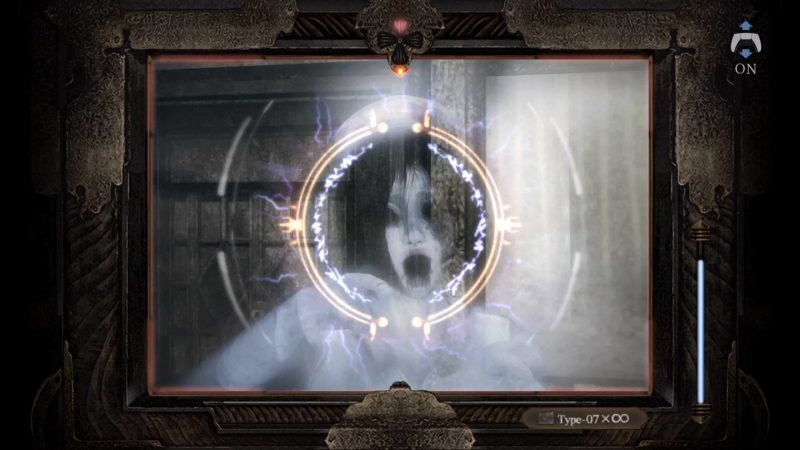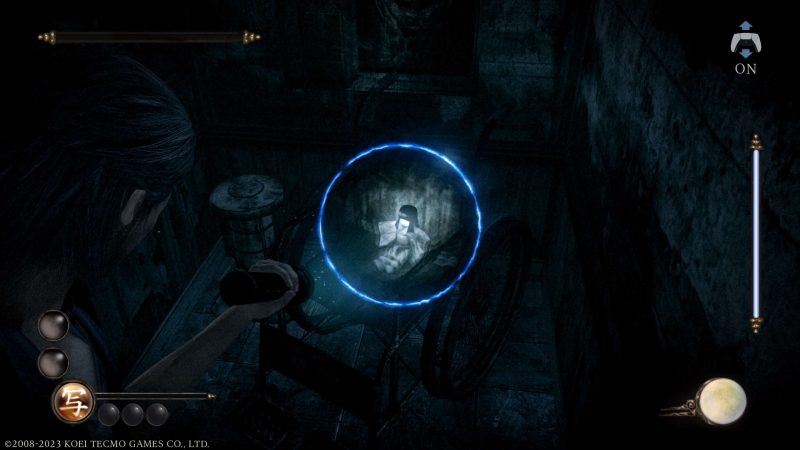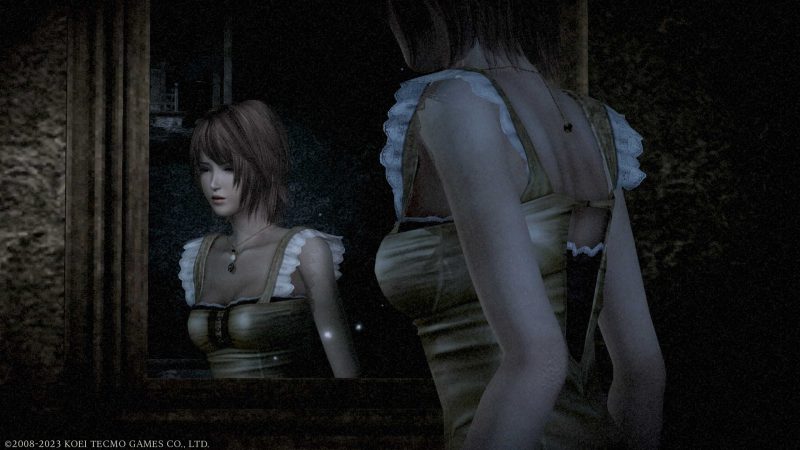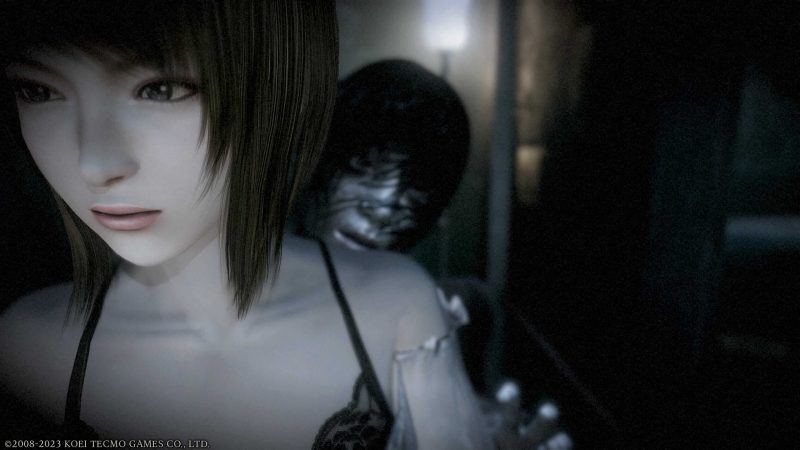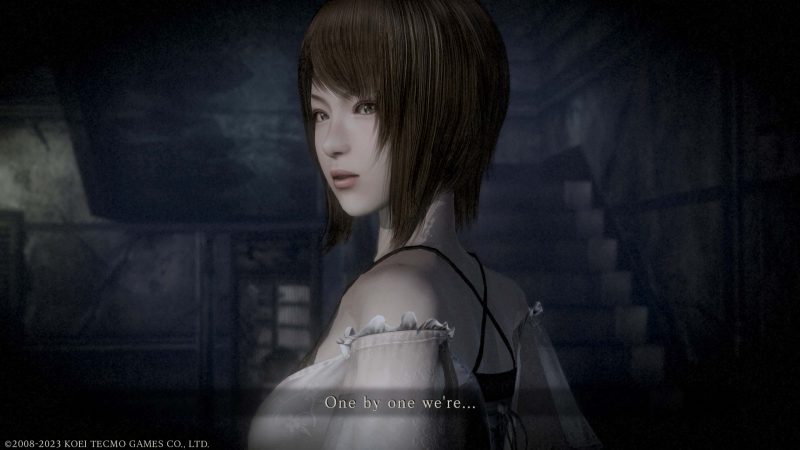Fatal Frame: Mask of The Lunar Eclipse PS5 Review – The localization of Fatal Frame: Mask of The Lunar Eclipse has been a long time coming. 15 years separate the original Japanese release on the Nintendo Wii from this one, bringing high expectations with it. While those expectations aren’t all met, the effort put into this localization along with its enhancements from the original make it a worthy horror romp for fans to dig into.
Fatal Frame: Mask of The Lunar Eclipse PS5 Review – An Imperfect Horror Romp More Than Worthy of This Localization
The three characters you play as all come to the Rogestu Isle for different reasons, but the cause remains the same: Moonlight Syndrome. For the local inhabitants of the island, this syndrome causes loss of memory, erratic behavior, and loss of control. Across the three characters, you explore the abandoned hospital to try and discover the cause of the Moonlight Syndrome.
The story in Lunar Eclipse is definitely one of those narratives that needs you to make the most of it. Cutscenes appear throughout the game, but the true details and history of the situation come in documents you find around the facility.
While a common tactic, Lunar Eclipse leans into it well by treating these notes differently than most games do. A fair chunk of them appear automatically as the story beats come. The notes themselves aren’t just matter-of-fact either. This is a hospital with a history of doctors, nurses, patients, and even religious figures, all with their own takes on what causes the Moonlight Syndrome and how to deal with it.
Note Taking
Different voices come out in the way each person is written, and they all play well into the themes of the game. Delivering this much of the story in this way means that the real meat of the situation can easily be missed if you don’t feel interested in searching for everything.
On that note, the game does a good job of inspiring you to investigate further just by the scenes the ghosts show you along the way. For instance, one sequence has you find a girl on the ground at the bottom of a stairs immediately followed by another with a different girl at the top of the same stairs looking down. Another one is a woman dressed to the nines pushing another well-dressed person around in a wheelchair. These aren’t simple situations, and they beg you to dig deeper.
Lunar Eclipse touches on lost memories like what can happen with Alzheimers but then twists the concepts into darker concepts generated by supernatural involvement. Some want to remember the people they lost, but some who lost their memory realize what they forgot was deeply painful. Each victim has a different story, and they all contribute to a greater whole that hits that psychological horror box over and over.
Alongside the theme, the sound work contributes the most to the game’s horror. Scenes are dark and dingy, with plenty of imagery to go along with it, but they pale in comparison to how well the sounds add to the formula. Unfortunately, some scares rely on those cheap sound crescendos
Always Bring A Flashlight
During your time in the facility, you use a flashlight to get around. Outside of its obvious purpose, it also helps you identify collectibles and resources. The game shows you an on-screen blue bar prompt when things are nearby for you to find. To find those things, you point your flashlight around the room to make their shiny icons appear.
The Right Joystick moves the flashlight left and right while you walk around. The game also gives you a strafe option. With this, you can stand in one place while you scan the flashlight around in all directions.
To do this often requires some rigmarole. Side to side movement works as it should, but up and down takes more effort and time. Narrow environments make this movement take even longer to properly register. Oftentimes, the camera moves well before the flashlight follows. You never need to mess with this when fighting ghosts, so the risk involved is low. Regardless, the cumbersome flashlight controls stand out among all the other inputs that respond naturally.
Save Your Life Through Pictures
Like all other Fatal Frame games before it, this one equips you with a Camera Obscura. By taking pictures, you deal damage to ghosts, and properly timing those pictures increases the damage you inflict on the undead.
You can charge up the camera’s Spirit Meter that appears around the target and take pictures. However, to maximize your damage, you need to wait until the ghost strikes. The camera displays lightning around the lock-on display when ghosts take the most damage. Immediately after, the camera lets you chain several shots without needing to reload your film. This combo stacks increasing damage and rewards you with more points.
This mechanic does reward patience, but after a while, it’s almost too easy to create your own opportunities. Basically, when enemies get close to you, they attack, and they move at a snail’s pace most of the time. I would aim the camera and then move toward them until they started their attack animation before stepping back a bit. Overall, this mechanic is fun, but it quickly turns the suspense of fighting ghosts into a routine.
Lunar Eclipse differentiates the gameplay by giving you sections with a Spirit Flashlight instead. This works much like the camera, but it cannot lock on. Instead, it offers a wider target area, faster player movement, and quicker charging. This complements the fact that these areas throw more enemies at you at once. Hitting multiple targets at once generates combo damage with the flashlight, making you change your approach to the game.
Key Refinement
It’s not a robust difference, but it doesn’t have to be. It keeps the formula the same while adjusting variables to how you play rather than asking you to use different mechanics altogether. This creates complementary gameplay without forcing any extra mechanics into the mix that the game doesn’t need.
After playing the game, I felt like there couldn’t have been that much work done to enhance the experience from its original form. This outlook is likely due to how conditioned I am now to the PS4 and PS5 generations that I take a lot for granted when it comes to game presentation.
So, I went back and watched a bunch of footage from the Wii version of the game. The team definitely put extra elbow grease into this release. They made lighting adjustments, environmental detail enhancements, refined the character models, fine-tuned menu layouts, and tweaks to the camera and flashlight HUDs.
The biggest change comes in loading times. The game disguises loading times with animations of the character opening doors. Now, it’s a simple action. On the Wii, it was a drawn out and slow animation for every single opened door. This release trims off a lot of fat when it comes to game time.
Granted, I only know this because I looked into the gameplay. Since the game never made it to the West, I can’t directly compare this release to anything else, especially not on PlayStation.
Creeping In
Still, the fundamental bones of the game still show their age. A new coat of paint can be put on the models, but the main three characters still don’t have a great deal of emotional expression. They look stoic to the point of rigidity, and their movements mirror that. Ghosts have a little more fluidity and expression but not much.
Combat difficulty can prove a mixed bag. Most of the time, enemies are slow and mindless and offer very little challenge. Other times, they jump around and aggressively come after you, though only the smaller ghosts do this. There’s an effect that comes from these battle extremes, but I’m not convinced that it contributes positively to the experience.
Another part of combat that contributes to this is how you lose sight of ghosts during fights. They do disappear and reappear, but that’s not the problem area. Often when they appear, they appear behind walls and you can’t see them, sometimes for a fair amount of time. To combat this, Lunar Eclipse includes a four-directional on-screen compass to show you where threats are.
Combine that with slow enemies, and you have yourself a recipe for boring lulls. If the combat sounds added genuine suspense, it would help the complete package. Unfortunately, it’s mostly amped up sound bytes that accompany scary bits in movies rather than sounds that might come from apparitions or old structures.
A Fan’s Long-Awaited Localization, Flaws and All
Fatal Frame: Mask of The Lunar Eclipse definitely deserves this localization. While it’s far from perfect, its premise and exploration alone can make this a beloved game. Combat is decent, with simplistic tactics that lend to the game’s overall pace. However, sound presentation, some control fumbles, lackadaisical character animations, and unbalanced enemy difficulty all have the potential to bring the overall experience down.
Equally so, Mask of The Lunar Eclipse channels much of the same energy found in a great deal of sixth generation horror games that made that time a great time for horror games. It may not be for everyone, but it’ll be a good time for fans of the genre.
Review code kindly provided by publisher
